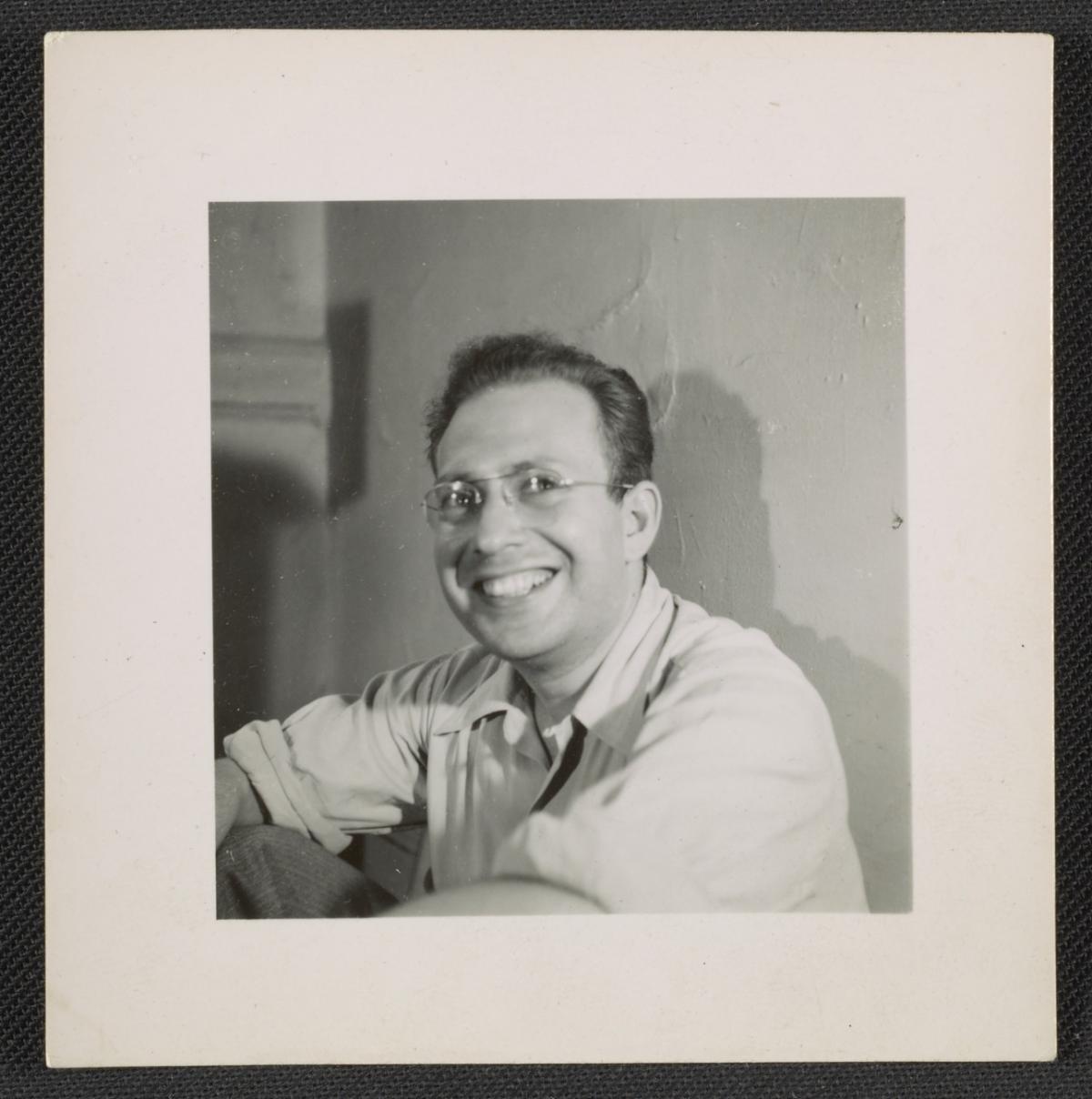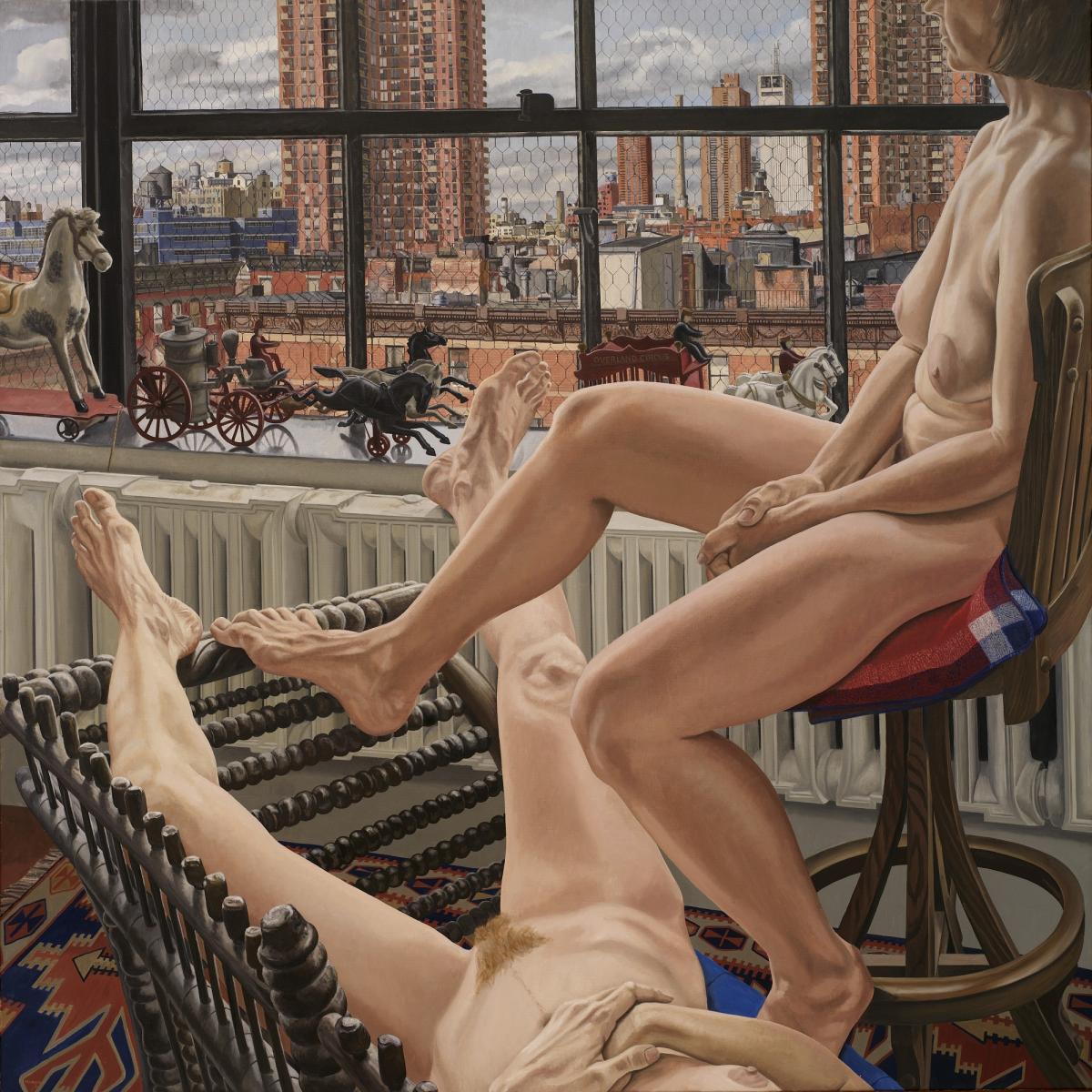Today we remember the towering twentieth-century figurative painter, Philip Pearlstein, who died on December 17, 2022, at age 98. Born in 1924 in Pittsburgh, Pennsylvania, Pearlstein was inspired at an early age by classes at Carnegie Museum of Art and, later, at the Carnegie Institute’s art school. Pearlstein became renowned for his daring large-scale nudes, which, in the 1960s, challenged the authority of post-painterly and hard-edge abstraction. “He took a traditional genre and made it shockingly modern,” said Melissa Ho, SAAM's curator of twentieth-century art.
From 1980 to 1984, Pearlstein served on the Smithsonian American Art Museum’s advisory board as an advocate for American artists.
Typical of Pearlstein’s style, the models appearing in Two Models in a Window with Cast Iron Toys (1987) are cropped by the edges of the canvas. The painter rendered these visually truncated bodies objectively, without apparent or clichéd sentiment. Their extended, intertwined, and static legs invite comparison and contrast with the limbs of the toy horses on the windowsill. The view outside locates this studio scene in Pearlstein's New York neighborhood of Hell’s Kitchen, where he lived and worked for decades.
Read commentary by several Smithsonian experts about Pearlstein’s art and his influences in a remembrance from Smithsonian Magazine.




















